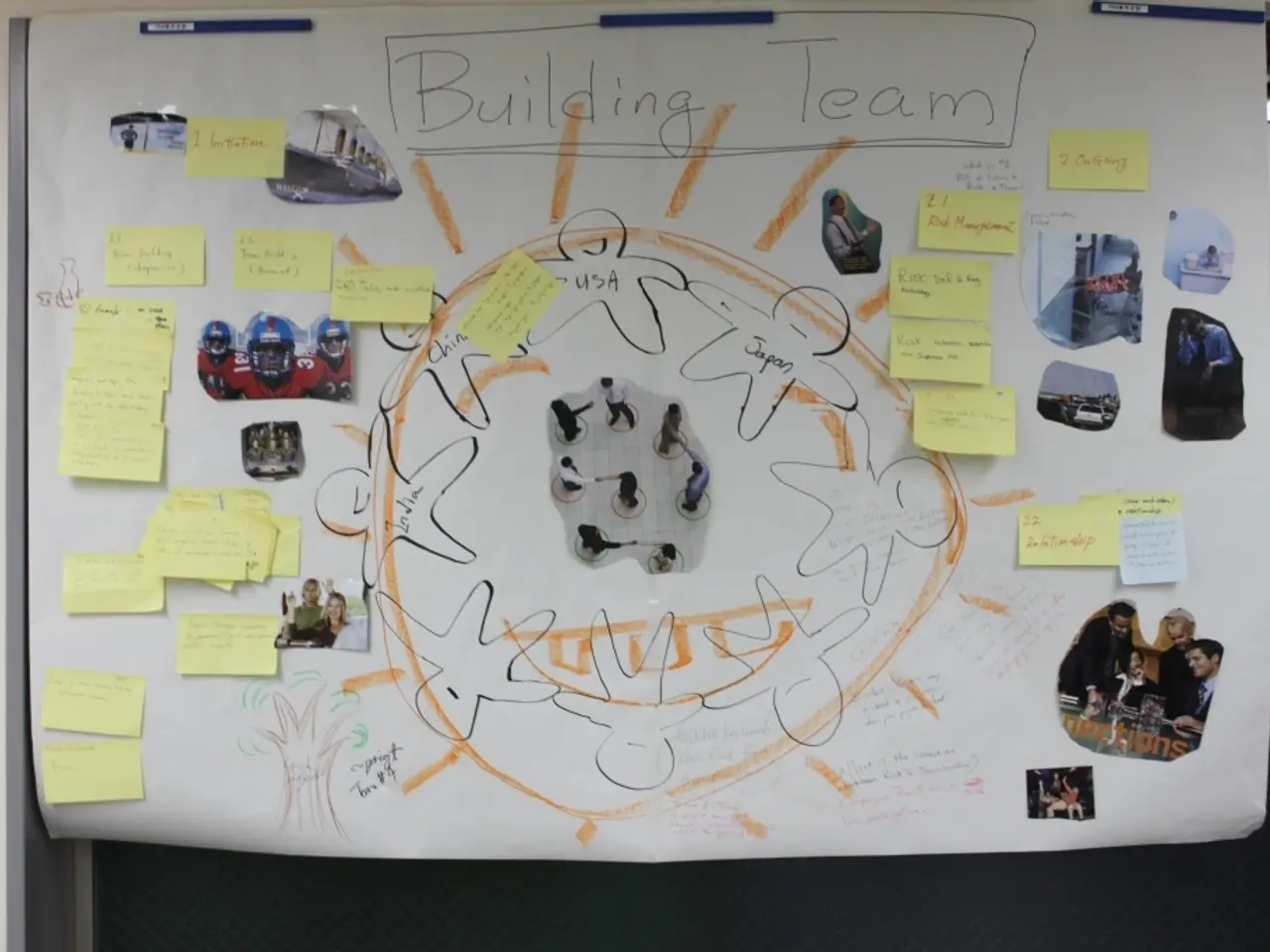Creating a PERT Chart: Essential Guide and its Importance
In the realm of project management, the Program Evaluation and Review Technique (PERT) stands out as a valuable tool. PERT charts, as they are commonly known, provide a visual representation of a project's timeline and milestones, making it easier to plan, assign tasks, and track progress.
Deenah, a project manager, has put PERT charts to good use in her latest endeavour, Project Couch. By using task management software like Hubstaff Tasks, Deenah has been able to make her PERT chart more effective, providing additional information and making the information actionable.
To create a PERT chart, several steps are involved. First, all project tasks and milestones must be identified and grouped if it simplifies the chart. Next, the relationships and dependencies between tasks are determined, establishing which tasks depend on others and how they affect the project's flow.
After that, three time estimates are made for each activity: optimistic, most likely, and pessimistic durations. These estimates help account for uncertainty and provide a more realistic scheduling approach. The chart is then constructed, and the expected duration for each task is calculated using the formula: Expected Time = (Optimistic + 4 × Most Likely + Pessimistic) ÷ 6.
By constructing a PERT chart, Deenah has been able to identify the critical path and slack for Project Couch. The critical path represents the longest sequence of dependent tasks, providing an indication of the project's minimum completion time. Slack, on the other hand, indicates extra time that can be used to complete tasks due to other non-dependent tasks taking longer.
In the case of Project Couch, the photographer has three days of slack, while the designer needs to be on time and has no slack. This information is crucial for Deenah in managing the project and ensuring that all tasks are completed on schedule.
PERT charts offer numerous benefits, including accounting for uncertainty, helping identify task dependencies and critical paths, providing confidence intervals for completion dates, and being particularly useful in complex projects with many interdependent tasks or uncertain durations. However, they do have their drawbacks. PERT charts require an understanding of statistical concepts and probabilistic thinking, making them more complex than simple scheduling tools. They can also overwhelm teams unfamiliar with their methodology or where tasks have very short durations.
To get the most value from a PERT chart, it should be maintained throughout the project and used in conjunction with task management software. By keeping the PERT chart up to date, it remains valuable throughout the project and helps Deenah stay focused on the parts of the project with the most risk for delay.
In conclusion, PERT charts provide a powerful tool for project managers like Deenah. They break a complex project into a clear roadmap, making it easier to assign tasks and track them effectively. By understanding and utilizing PERT charts, project managers can estimate timelines more accurately, identify critical tasks, stay on-time and on-budget, and easily update timelines when adjustments are needed.
- Deenah uses Hubstaff Tasks to enhance the effectiveness of her PERT chart for Project Couch, providing additional information and making the information actionable.
- In addition to its benefits in accounting for uncertainty and helping identify task dependencies, PERT charts can be particularly useful when combined with task management software to maintain accurate timelines throughout a project.
- Deenah's blog post, discussing her experience with the Hubstaff Tasks and PERT charts, delves into the financial implications of effective project management using these tools in the realm of business and technology.




